How to Buy Headphones That Won't Bother Your Wife
There's a stereotype that men are interested in technology and gadgets, and women concern themselves with how said technology fits in with the home decor -- and the checking account. Like many stereotypes, this one is rooted in some degree of anecdotal truth, particularly in the audiophile world. It's how the term Wife Acceptance Factor came into being -- as in, "will my wife (or partner or roommate) be cool with my new audio gear?"
Now, headphones aren't necessarily going to generate the same type of domestic angst as, say, giant loudspeakers that might require a rearranging of furniture. You don't really need to worry about a pair of headphones taking up too much space or clashing with room decor. And if you listen to your headphones via your phone, portable DAP (digital audio player), or laptop, there's not much visible gear to contend with. Of course, a desktop setup may introduce more components into the picture: a full-size headphone amp and-or DAC (digital to audio converter), for example. And it may very well be that your partner bristles at the sight of all of that audio gear.
With so many types of headphones out there, Moon Audio customers often ask:
How do I choose the best headphones for me that won't bother my wife?
Clearly, Wife Acceptance Factor is a necessary variable in headphone purchases. Fortunately, you can get the listening experience you want while keeping your relationship intact. Here are our tips.
Choose Closed-Back Headphones
Complaint: "I can hear everything you're listening to!"
Pro Tip: A closed-back headphone will keep sound bleed to a minimum.
When thinking about the "annoyance" factor of your headphones, you need to think about sound bleed, or the amount of sound that is audible to people in your vicinity. Nothing will annoy your partner faster than loud music escaping from your open-back headphones while they are trying to read, watch television, or sleep. Likewise, if you will be using your headphones for gaming, particularly at night, you want to ensure that others aren't being subjected to sounds coming from your headphones. If you intend to listen to your headphones while your partner or other family members are nearby, consider a pair of closed-back headphones.
"Closed back" and "open back" refer to the permeability of the ear cups. Open-back headphones allow air to pass through their ear cups from the rear of the driver. On an open-back headphone, the outside of the ear cup will have a pattern that looks like a shade, screen, or series of holes that offer a glimpse of the interior. Because of their open nature, this headphone design will leak sound. Closed-back headphones are completely sealed around the back, only allowing sound out where it can reach your ear. On a closed-back headphone, the ear cup will appear solid. Even if you like to listen at a high volume, closed-back headphones will do a good job of keeping sound leakage to a minimum. As a bonus for the listener, closed-back headphones offer better sound isolation, meaning they let in less ambient noise.
Each headphone type has its own advantages. Closed-back headphones generally offer a more intimate and immersive sound, with better bass, while open-back headphones will give you a wider soundstage and a more open and airy sound. You can read more in our guide on Closed Back vs. Open Back Headphones: Everything You Need to Know.
Now, there are exceptions. Meze open-back headphones (the Empyrean and the Elite) tend to bleed less sound than other open-back headphones. And the Grado GS1000e, while open back, is great for low-level listening, meaning you don't need to turn the volume up very high. Meanwhile, the thinner cups on the closed-back HiFiMan R10P and HiFiMan R10D closed-back headphones do allow some sound to leak. So choosing a closed-back headphone is a general guideline; you can always contact us for more information.
Closed-Back Headphones By Sound Signature
Consider IEMs over Full-Size Headphones
Complaint: "I'd like to look at your head, not your headphones."
Pro Tip: Consider IEMs for their low profile.
IEMs (in-ear monitors, or earphones) provide a range of sound signatures and features that make them a wonderful alternative to full-size headphones. IEMs are small, unobtrusive, and portable. The ear pieces sit in your ear canal, offering a snug fit and intimate presentation. Many IEMs are available as custom models, meaning they are specially crafted for your unique ears. To obtain a custom IEM, a licensed audiologist will make impressions of your ear canals. Originally designed as monitors for professional musicians and recording engineers, IEMs have gained appeal among discerning audiophiles, offering sound quality that rivals their full-size counterparts. Unlike basic, inexpensive ear buds, IEMs come in a range of driver types, including dynamic, balanced armature, and planar magnetic - giving you a range of sound options, from fun to musical to bassy to reference. And the great thing about IEMs is you can wear them lying down/in bed, which you can't always do with full-size headphones.
Warm & Musical
Empire Ears Hero IEM
Detailed & Resolute
Empire Ears ODIN IEM
Detailed & Resolute
QDC Anole VX IEM
Detailed & Resolute
Empire Ears Wraith IEM
Pay Attention to Aesthetics
Complaint: "Those headphones don't suit you."
Solution: Consider the style and color of your headphones along with other factors.
Audiophile headphones come in a range of colors and styles, ranging from more utilitarian and understated to glamorous and quirky. While you're likely not going to be choosing your headphones based on looks alone, it's something to consider, especially if your partner is going to be seeing you in your headphones regularly. As with fashion choices and hairstyles, we tend to make these choices at least in part with our significant other's tastes and preferences in mind. There are several things to consider when it comes to the look of your headphones, such as color, materials, accents, and ear cup size and shape. The truth is, headphones can be seen as an accessory just like sunglasses or sneakers. What looks good on one person may not be another person's cup of tea. Fortunately, there are many options when it comes to choosing the headphones that speak to your (and your partner's) aesthetic preferences.
Headhpones with color
All-black headphones
Headphones with wood accents
Consider Portable Components or a One-Box Solution
Complaint: "Your amplifier (or other gear) takes up so much space!"
Solution: Check out portable gear or a one-box solution.
Assuming your headphones are easy to drive (meaning your phone can handle the power requirements), then technically this is all you need. However, as an audiophile, you probably don't want to listen to your high-end headphones using just your phone. You want to maximize sound by using a high-quality DAC/headphone amp or music player. That being said, your partner might not want to have to look at your audio gear all of the time (as absolutely stunning as it may be), or space may be at a premium in your living quarters. If that is the case, you may consider using a portable headphone amp, DAC, or DAP instead of full-size components. Fortunately, there are many high-performance portable options available. And even if you don't plan to use these items on the go, they will help maintain a lower profile in your living space.
Another great option is a one-box solution such as the Naim Uniti Atom Headphone Edition. This petite music streaming system incorporates a DAC, music streamer, headphone amplifier, preamplifier. It's designed to be the ultimate solo listening source; you don't need a separate computer or streaming source. This will save your partner from having to stare at piles of audio gear, should you be inclined to have such a pile in the living room.
Take a Look at Wireless Headphones
Complaint: "I want your hands free so you can help out around the house."
Solution: Consider wireless headphones or IEMs.
Audiophiles have traditionally preferred wired connections because there is no loss in data. Audio cables allow for data to be transferred without any loss or degradation from the source. Wireless transmission of audio requires compression and many times. Today's wireless headphones and earbuds offer audio quality not previously imagined. Imagine the convenience of throwing on a pair of headphones or IEMs with no pesky cable to get in the way while you manage household chores or tend to a fussy baby. You can leave your phone or portable audio player on the table, safe and dry while you merrily wash the dishes and listen to music. Wireless headphones that run via Bluetooth have a range of 30 feet or more. Going wireless eliminates the visual of cables and wires, should that be a bone of contention in your relationship.
Wireless Full-Size Headphones
HiFiMan Ananda BT Headphones
Sony WH-1000XM4 Wireless Headphones
Audeze Penrose Gaming Headphones
Sennheiser Momentum 3 Wireless Headphones
Wireless Earphones & IEMs
Sony WF-1000XM4 Wireless Earbuds
Wireless Earphones and IEMs
Sennheiser Momentum True Wireless 2 Earphones
Fostex TM2 True Wireless Stereo In-Ear System
Video
How to Buy Headphones That Won't Bother Your Wife
Moon Audio strives to provide the most relevant collection of curated audiophile products for our customers. Our reviews and product guides are designed to inform our community and share our passion for audio technology. Whether you're just starting out or a seasoned professional, we're glad you joined us.
Want more? Sign up for curated content in your inbox.
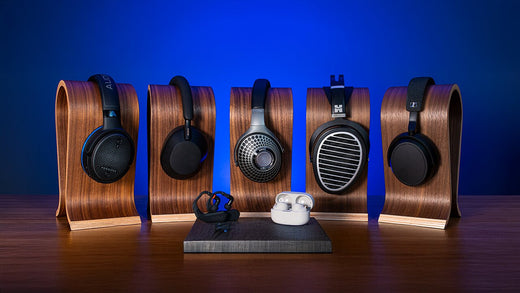
BY: SARA SCHWEIGER |
Read Time: Approx. 23 min. The Best Wireless Headphones and Earbuds of 2024 Yep, we, Moon Audio, makers of all... Read more
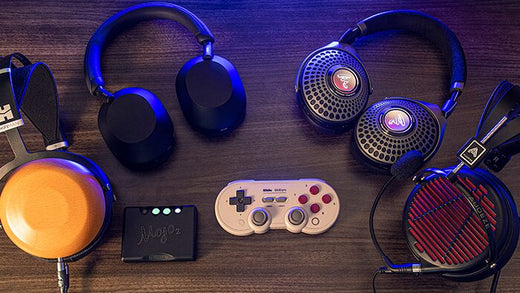
BY: SARA SCHWEIGER |
Get Better Sound From Your Xbox, Playstation, Switch, PC, & Mac For every ten audiophiles, at least two of them... Read more
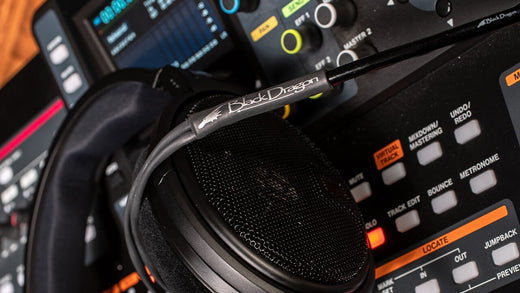
BY: SARA SCHWEIGER |
Read Time: Approx. 8 min. Summary: This guide highlights the best headphones for mixing and mastering, offering options across different price... Read more

BY: SARA SCHWEIGER |
Read Time: Approx. 10 min. TL;DR: This guide explores the differences between four main types of headphone drivers — planar magnetic,... Read more
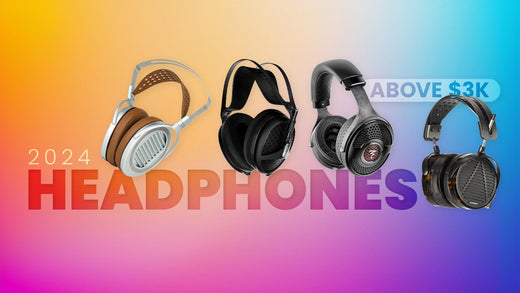
BY: SARA SCHWEIGER |
The Premier Audiophile Headphones of the Year From closed-backs to planar magnetic, wireless, and more, the collection of headphones we... Read more
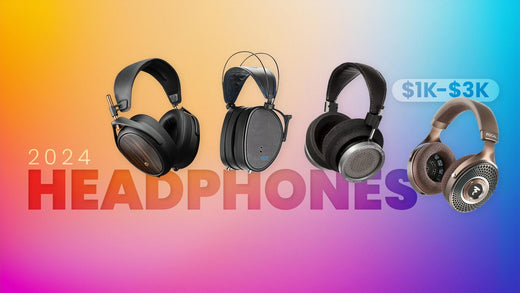
BY: SARA SCHWEIGER |
The Best Audiophile-Grade Headphones for Every Budget From closed-backs to planar magnetic, wireless, and more, the collection of headphones we... Read more

BY: SARA SCHWEIGER |
Read Time: Approx. 10 min. TL;DR: The debate over analog vs. digital audio boils down to personal preference. Analog offers warmth,... Read more

BY: SARA SCHWEIGER |
Get Better Sound From Your Xbox, Playstation, Switch, PC, & Mac For every ten audiophiles, at least two of them... Read more

BY: SARA SCHWEIGER |
Read Time: Approx. 5 min. Summary: Explore the top DAC and amp combos for audiophiles seeking high-quality sound. This guide... Read more

BY: SARA SCHWEIGER |
The Best Desktop DACs and Music Streamers for your Audio Setup It's that time of year again, and we're taking... Read more

BY: SARA SCHWEIGER |
Read Time: Approx. 10 min. Everything You Need to Know about Setting Up, Connecting & Using Your Chord Hugo 2... Read more

BY: SARA SCHWEIGER |
How to Set Up, Connect, and Use Your Chord Mojo 2 DAC Headphone Amp Interested in buying a Chord Electronics Mojo... Read more

BY: SARA SCHWEIGER |
Get Better Sound From Your Xbox, Playstation, Switch, PC, & Mac For every ten audiophiles, at least two of them... Read more

BY: SARA SCHWEIGER |
Read Time: Approx. 5 min. Summary: Explore the top DAC and amp combos for audiophiles seeking high-quality sound. This guide... Read more

BY: SARA SCHWEIGER |
Read Time: Approx. 5 min. Summary: DACs are essential for high-quality audio. They translate digital music into analog sound your... Read more

BY: SARA SCHWEIGER |
Read Time: Approx. 15 min. Bluesound NODE ICON: The Future of Hi-Res Music Streaming Iconic. Icon. These are just a... Read more

BY: SARA SCHWEIGER |
Read Time: Approx. 25 min. Vintage-Inspired Amplifier with Modern Tech & Premium Hi-Fi Sound Retro charm meets modern innovation with NAD... Read more

BY: SARA SCHWEIGER |
Get Better Sound From Your Xbox, Playstation, Switch, PC, & Mac For every ten audiophiles, at least two of them... Read more

BY: SARA SCHWEIGER |
Read Time: Approx. 18 min. Your Guide to Buying Vintage High-End Audio Gear With the resurgence of vinyl and physical... Read more

BY: SARA SCHWEIGER |
Read Time: Approx. 5 min. Summary: Explore the top DAC and amp combos for audiophiles seeking high-quality sound. This guide... Read more

BY: SARA SCHWEIGER |
Read Time: Approx. 10 min. TL;DR: This guide explores the differences between four main types of headphone drivers — planar magnetic,... Read more

BY: SARA SCHWEIGER |
Read Time: Approx. 20 min. Headphone Sound Quality: More Than Just Measurements Headphone measurements are a surprisingly controversial topic in... Read more

BY: SARA SCHWEIGER |
Read Time: Approx. 25 min. Vintage-Inspired Amplifier with Modern Tech & Premium Hi-Fi Sound Retro charm meets modern innovation with NAD... Read more

BY: SARA SCHWEIGER |
The Premier Audiophile Headphones of the Year From closed-backs to planar magnetic, wireless, and more, the collection of headphones we... Read more

BY: SARA SCHWEIGER |
The Best Audiophile-Grade Headphones for Every Budget From closed-backs to planar magnetic, wireless, and more, the collection of headphones we... Read more
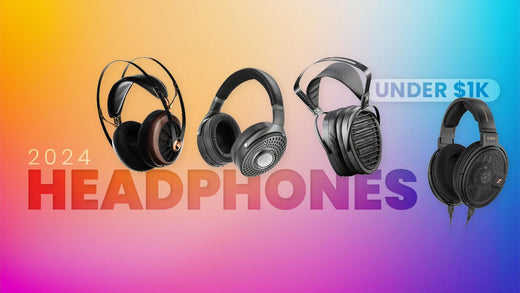
BY: SARA SCHWEIGER |
The Best Audiophile Headphones for Everyday Listening From closed-backs to planar magnetic, wireless, and more, the collection of headphones we... Read more
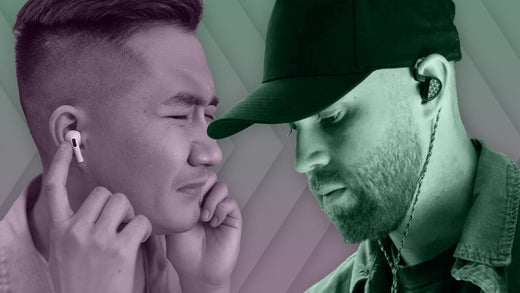
BY: SARA SCHWEIGER |
Read Time: Approx. 10 min. TL;DR: Finding comfortable IEMs and earbuds can be challenging due to issues like poor fit, material... Read more

BY: SARA SCHWEIGER |
Read Time: Approx. 8 min. Summary: This guide highlights the best headphones for mixing and mastering, offering options across different price... Read more

BY: SARA SCHWEIGER |
The Premier Audiophile Headphones of the Year From closed-backs to planar magnetic, wireless, and more, the collection of headphones we... Read more

BY: SARA SCHWEIGER |
The Best Audiophile-Grade Headphones for Every Budget From closed-backs to planar magnetic, wireless, and more, the collection of headphones we... Read more

BY: SARA SCHWEIGER |
Read Time: Approx. 5 min. TL;DR: Impedance matching in audio is about balancing the impedance of different audio components to... Read more

BY: SARA SCHWEIGER |
We've created this guide to be your one-stop resource for understanding and buying in-ear monitors. Read more

BY: SARA SCHWEIGER |
Read Time: Approx. 23 min. The Best Wireless Headphones and Earbuds of 2024 Yep, we, Moon Audio, makers of all... Read more

BY: SARA SCHWEIGER |
Get Better Sound From Your Xbox, Playstation, Switch, PC, & Mac For every ten audiophiles, at least two of them... Read more

BY: SARA SCHWEIGER |
Read Time: Approx. 10 min. TL;DR: This guide explores the differences between four main types of headphone drivers — planar magnetic,... Read more

BY: SARA SCHWEIGER |
The Premier Audiophile Headphones of the Year From closed-backs to planar magnetic, wireless, and more, the collection of headphones we... Read more

BY: SARA SCHWEIGER |
The Best Audiophile-Grade Headphones for Every Budget From closed-backs to planar magnetic, wireless, and more, the collection of headphones we... Read more

BY: SARA SCHWEIGER |
The Best Audiophile Headphones for Everyday Listening From closed-backs to planar magnetic, wireless, and more, the collection of headphones we... Read more

BY: SARA SCHWEIGER |
Read Time: Approx. 23 min. The Best Wireless Headphones and Earbuds of 2024 Yep, we, Moon Audio, makers of all... Read more

BY: SARA SCHWEIGER |
Read Time: Approx. 8 min. Summary: This guide highlights the best headphones for mixing and mastering, offering options across different price... Read more

BY: SARA SCHWEIGER |
The Best Audiophile-Grade Headphones for Every Budget From closed-backs to planar magnetic, wireless, and more, the collection of headphones we... Read more

BY: SARA SCHWEIGER |
We've created this guide to be your one-stop resource for understanding and buying in-ear monitors. Read more

BY: SARA SCHWEIGER |
Read Time: Approx. 7 min. Introduction to IEM Drivers: Dynamic Drivers, Electrostatic Drivers, Balanced Armature, and Bone Conduction Drivers Like... Read more
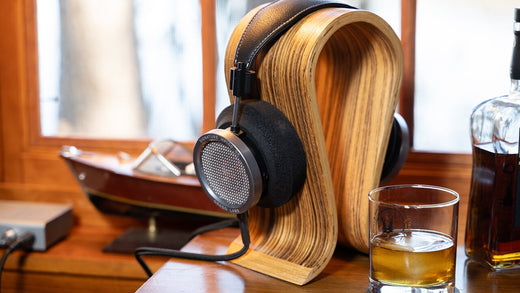
BY: SARA SCHWEIGER |
Read Time: Approx. 17 min. Flagship Headphones Blend Timeless Design with Freshly Engineered Technologies Grado Labs is one hi-fi brand... Read more

BY: SARA SCHWEIGER |
Read Time: Approx. 18 min. Your Guide to Buying Vintage High-End Audio Gear With the resurgence of vinyl and physical... Read more

BY: SARA SCHWEIGER |
Read Time: Approx. 8 min. Summary: This guide highlights the best headphones for mixing and mastering, offering options across different price... Read more

BY: SARA SCHWEIGER |
The Best Audiophile-Grade Headphones for Every Budget From closed-backs to planar magnetic, wireless, and more, the collection of headphones we... Read more

BY: SARA SCHWEIGER |
The Best Audiophile Headphones for Everyday Listening From closed-backs to planar magnetic, wireless, and more, the collection of headphones we... Read more

BY: SARA SCHWEIGER |
Read Time: Approx. 20 min. Headphone Sound Quality: More Than Just Measurements Headphone measurements are a surprisingly controversial topic in... Read more

BY: SARA SCHWEIGER |
Read Time: Approx. 10 min. TL;DR: Proper care and cleaning of IEMs and earbuds ensure sound clarity, hygiene, and longevity.... Read more

BY: SARA SCHWEIGER |
Read Time: Approx. 10 min. TL;DR: Finding comfortable IEMs and earbuds can be challenging due to issues like poor fit, material... Read more

BY: SARA SCHWEIGER |
Read Time: Approx. 23 min. The Best Wireless Headphones and Earbuds of 2024 Yep, we, Moon Audio, makers of all... Read more

BY: SARA SCHWEIGER |
Read Time: Approx. 17 min. Flagship Headphones Blend Timeless Design with Freshly Engineered Technologies Grado Labs is one hi-fi brand... Read more

BY: SARA SCHWEIGER |
Get Better Sound From Your Xbox, Playstation, Switch, PC, & Mac For every ten audiophiles, at least two of them... Read more

BY: SARA SCHWEIGER |
Read Time: Approx. 20 min. Headphone Sound Quality: More Than Just Measurements Headphone measurements are a surprisingly controversial topic in... Read more

BY: SARA SCHWEIGER |
Read Time: Approx. 23 min. The Best Wireless Headphones and Earbuds of 2024 Yep, we, Moon Audio, makers of all... Read more

BY: SARA SCHWEIGER |
Get Better Sound From Your Xbox, Playstation, Switch, PC, & Mac For every ten audiophiles, at least two of them... Read more

BY: SARA SCHWEIGER |
The Premier Audiophile Headphones of the Year From closed-backs to planar magnetic, wireless, and more, the collection of headphones we... Read more

BY: SARA SCHWEIGER |
The Best Audiophile-Grade Headphones for Every Budget From closed-backs to planar magnetic, wireless, and more, the collection of headphones we... Read more

BY: SARA SCHWEIGER |
The Best Audiophile Headphones for Everyday Listening From closed-backs to planar magnetic, wireless, and more, the collection of headphones we... Read more

BY: SARA SCHWEIGER |
Read Time: Approx. 20 min. Headphone Sound Quality: More Than Just Measurements Headphone measurements are a surprisingly controversial topic in... Read more

BY: SARA SCHWEIGER |
Read Time: Approx. 10 min. TL;DR: The debate over analog vs. digital audio boils down to personal preference. Analog offers warmth,... Read more

BY: SARA SCHWEIGER |
Read Time: Approx. 10 min. TL;DR: Proper care and cleaning of IEMs and earbuds ensure sound clarity, hygiene, and longevity.... Read more

BY: SARA SCHWEIGER |
Read Time: Approx. 10 min. TL;DR: Finding comfortable IEMs and earbuds can be challenging due to issues like poor fit, material... Read more
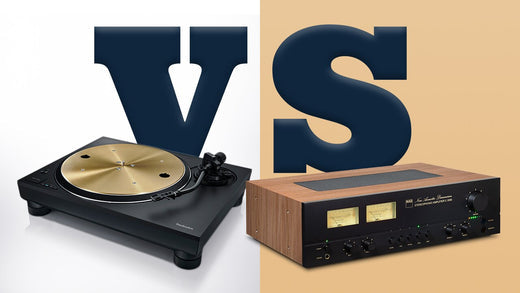
BY: SARA SCHWEIGER |
Read Time: Approx. 15 min. Is Vinyl Truly Better than Digital? If I stopped an audiophile on the street 10 years ago... Read more

BY: SARA SCHWEIGER |
Read Time: Approx. 23 min. The Best Wireless Headphones and Earbuds of 2024 Yep, we, Moon Audio, makers of all... Read more

BY: SARA SCHWEIGER |
Read Time: Approx. 17 min. A Smooth & Musical Campfire Audio IEM with a Surprising Presentation Campfire Audio, a well-known... Read more

BY: SARA SCHWEIGER |
Read Time: Approx. 10 min. TL;DR: Proper care and cleaning of IEMs and earbuds ensure sound clarity, hygiene, and longevity.... Read more

BY: SARA SCHWEIGER |
Read Time: Approx. 10 min. TL;DR: Finding comfortable IEMs and earbuds can be challenging due to issues like poor fit, material... Read more

BY: SARA SCHWEIGER |
Read Time: Approx. 23 min. The Best Wireless Headphones and Earbuds of 2024 Yep, we, Moon Audio, makers of all... Read more

BY: SARA SCHWEIGER |
Read Time: Approx. 8 min. Summary: This guide highlights the best headphones for mixing and mastering, offering options across different price... Read more

BY: SARA SCHWEIGER |
The Premier Audiophile Headphones of the Year From closed-backs to planar magnetic, wireless, and more, the collection of headphones we... Read more

BY: SARA SCHWEIGER |
Read Time: Approx. 10 min. TL;DR: Finding comfortable IEMs and earbuds can be challenging due to issues like poor fit, material... Read more

BY: SARA SCHWEIGER |
Read Time: Approx. 10 min. TL;DR: This guide explores the differences between four main types of headphone drivers — planar magnetic,... Read more

BY: SARA SCHWEIGER |
The Premier Audiophile Headphones of the Year From closed-backs to planar magnetic, wireless, and more, the collection of headphones we... Read more

BY: SARA SCHWEIGER |
The Best Audiophile-Grade Headphones for Every Budget From closed-backs to planar magnetic, wireless, and more, the collection of headphones we... Read more

BY: SARA SCHWEIGER |
The Best Audiophile Headphones for Everyday Listening From closed-backs to planar magnetic, wireless, and more, the collection of headphones we... Read more
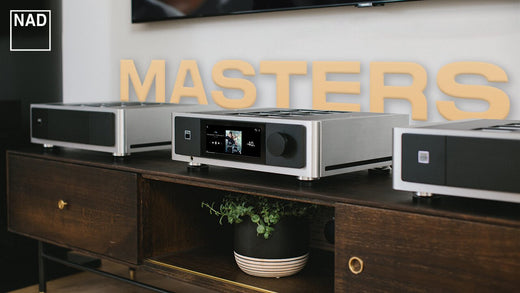
BY: SARA SCHWEIGER |
Read Time: Approx. 18 min. A Comprehensive Review of the NAD M66 and Masters Series Collection Hi-Fi audio manufacturer NAD... Read more

BY: SARA SCHWEIGER |
We've created this guide to be your one-stop resource for understanding and buying in-ear monitors. Read more

BY: SARA SCHWEIGER |
Read Time: Approx. 10 min. TL;DR: Finding comfortable IEMs and earbuds can be challenging due to issues like poor fit, material... Read more

BY: SARA SCHWEIGER |
Read Time: Approx. 23 min. The Best Wireless Headphones and Earbuds of 2024 Yep, we, Moon Audio, makers of all... Read more

BY: SARA SCHWEIGER |
Get Better Sound From Your Xbox, Playstation, Switch, PC, & Mac For every ten audiophiles, at least two of them... Read more

BY: SARA SCHWEIGER |
Read Time: Approx. 8 min. Summary: This guide highlights the best headphones for mixing and mastering, offering options across different price... Read more

BY: SARA SCHWEIGER |
Read Time: Approx. 10 min. TL;DR: This guide explores the differences between four main types of headphone drivers — planar magnetic,... Read more

BY: SARA SCHWEIGER |
The Best Audiophile-Grade Headphones for Every Budget From closed-backs to planar magnetic, wireless, and more, the collection of headphones we... Read more

BY: SARA SCHWEIGER |
Read Time: Approx. 23 min. The Best Wireless Headphones and Earbuds of 2024 Yep, we, Moon Audio, makers of all... Read more

BY: SARA SCHWEIGER |
Get Better Sound From Your Xbox, Playstation, Switch, PC, & Mac For every ten audiophiles, at least two of them... Read more

BY: SARA SCHWEIGER |
The Best Digital Audio Players of the Year Arguably one of our top sellers year after year, Digital Audio Players... Read more

BY: SARA SCHWEIGER |
We've created this guide to be your one-stop resource for understanding and buying in-ear monitors. Read more
